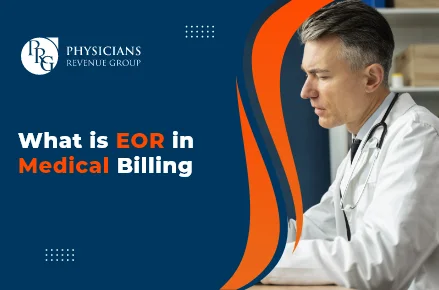
Email: info@prgmd.com | Call: +1 (630) 242-6474
Business hours: 9:00 to 5:00 | Monday to Friday
Email: info@prgmd.com | Call: +1 (630) 242-6474
Business hours: 9:00 to 5:00 | Monday to Friday

Table of Contents
ToggleMedical billing operations are an essential aspect of the healthcare industry. Collections and healthcare billing are time-consuming and somewhat complex. Every medical practitioner knows how difficult is maximizing reimbursement rates for the services rendered. Professional medical billing services provider work to enhance your practice’s cash flow, which leads to financial success and a better RCM of your practice.
If your practice faces consistent claim denials, your revenue can get trapped into A/R; this alone can cause significant turbulence for your revenue (cash flow). To mitigate such issues and maximizing reimbursement rates, healthcare practitioners must follow a proactive approach to medical billing. Below are some strategies/tips which can help in maximizing reimbursement rates in medical billing operations; these include:
Each claim has a specific amount of time under which it needs to be submitted and considered for reimbursement. Neglecting the said time and filing the claims after their due date more often results in the healthcare practice paying for it at their own expense. Providers sometimes miss filing timely claims due to lost or incomplete superbills. Superbills are charge tickets, having an itemized list of patient services/treatments offered. Even when such claims are corrected, they get denied if submitted past their filing date.
Over 80% of medical bills have errors, which leads to the rejection of claims and delayed payments. To minimize the risks of such instances, the claims must be accurate and complete at the first filing. The claims must also undergo double-checking for any possible errors before submission. The common errors include incorrect data of patients / providers / insurance. Furthermore, duplicate billing and poor documentation can also result in claim denials. Additionally, under-coding and up-coding are intentional or accidental errors that can be rectified prior to submissions.
Rejected claims do not go under the processing phase owing to errors. The denied claims are deemed unpayable by insurance providers due to violating the patient-payer contract or any errors post-processing. Both of these instances need immediate handling, with communication to a payer representative to expedite the editing process.
Maximizing reimbursement rates also calls for a reduction in coding errors. Coding errors can occur due to the limitation of diagnosis codes or even incorrect usage of modifiers. Such errors result in loss of reimbursements or reduction in payments. Medical coders must double-check codes before submissions. Furthermore, the coder must also contact providers if the procedure descriptions need clarification and cross-check with coding resources for effective resolution.
Medical practices must also keep tabs on accounts receivable, stay informed about the medical billing regulations, clearly identify problematic accounts, and know when to outsource medical billing to a billing services provider to reduce billing errors. The third-party billing service providers have experts in all phases of a billing cycle, which can effectively manage your practice to maximize reimbursement rates.
More Billing Tips for Healthcare Providers include:
Healthcare technological advancements can help streamline your practice’s billing processes and even improve your claims’ accuracy. The EHRs can assist in collecting patient information efficiently, while the practice management software helps track the claims and manage patient accounts. The patient portals also assist in improving patient communication, letting them view bills and pay bills online.
Outsourcing medical billing is a practical solution for practitioners needing additional expertise or resources for maximizing reimbursement rates. By outsourcing operations, medical practices can effectively save time and resources. One consideration here is to seek a reputable medical billing services provider, like Physicians Revenue Group, Inc., to ensure effective management of billing processes.
Keeping your medical practice compliant with the regulatory requirements is essential for avoiding fines and penalties. The HIPAA regulations govern the security and privacy of patient data/information. It is important to note that any fraudulent billing practices can result in legal actions against the accused medical practices, and can cause significant damages to a provider’s reputation.
Effective and practical medical billing operations are essential for maximizing reimbursement rates while ensuring healthcare practices’ financial success. Following a definitive collections process, proper management of claims, reduction in coding errors, and leveraging technology can help in maximizing reimbursement rates for a medical practice. Outsourcing billing operations is also a viable solution for healthcare practices. Outsourcing is especially beneficial for practices that need more expertise or resources for overhauling an entire in-house billing operation.
Ideally, there are three major types of medical billing systems, and these include:
Share:
Categories
Recently Added

What is an ABN in medical billing?

What does a Clearinghouse do During Claims Submission?

What is EOR in Medical Billing?
We Would Love to Assist You!
We treat your data confidentially and don’t share any information with a third party.